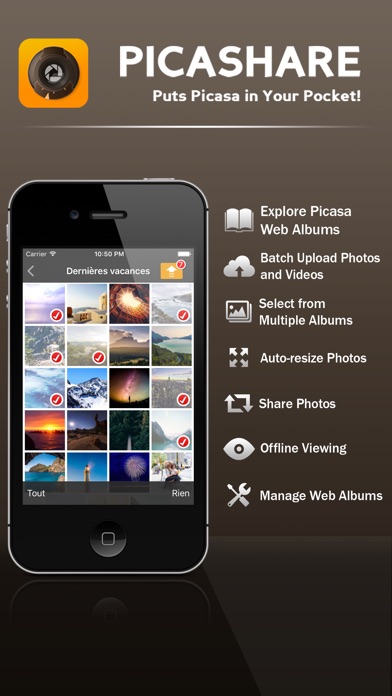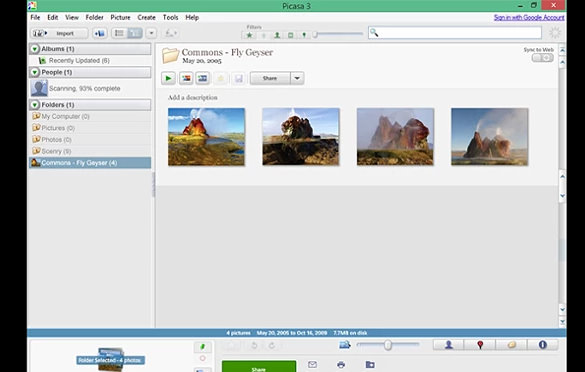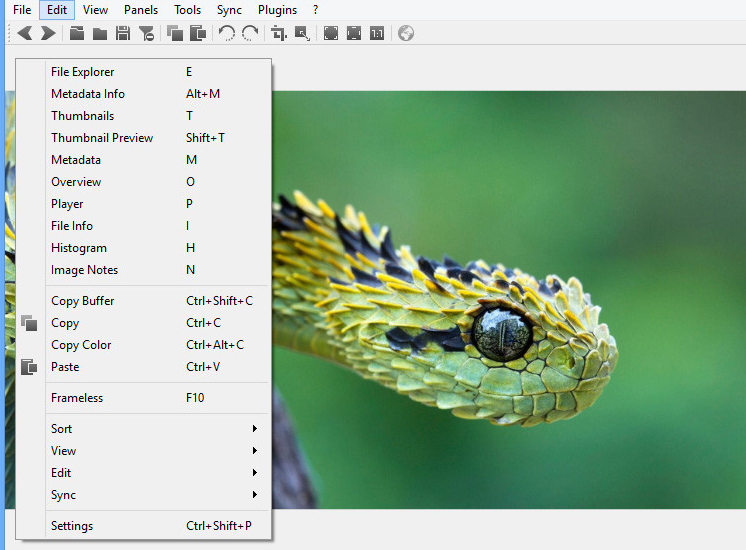


If the server can send this file, it sends it and the process stops. At a high level, the server basically tries to send the client a pre-rendered version of index.php. When a browser requests the index.php page, a long chain of events commence.
#GOOGLE PHOTO VIEWER SINCE PICASA CODE#
After clicking on an image, a popup is generated with a larger version of the image for viewing.Īll source code can be found on GitHub. These take up 100% of the screen (at all screen widths) to provide a cleaner experience no side whitespace means no distractions. Below that are arrows that take you to the previous or next album in the list. At the top of each viewer page is the category name. Upon clicking a category, the category viewer page is brought up.

By overlaying the details, the interface is kept cleaner because of the simple square layout. Overlayed on the cover photo of each category is the category name, along with the number of images in the respective category. These are the public albums stored in the user’s account. On the main page, a grid of “categories” is the main focus. A custom “about blurb” can also be configured from within the web interface of Picasa Web Albums that displays on the index page, explaining more about the account owner. This creates a very personalized experience. The website highlights its generic handling of any Picasa account by boldly displaying the user’s name and profile picture in the upper right of every page, as well as in the footer. There are only two main pages available to the user: the index page and the category viewer page. I designed the Picasa Photo Gallery to be very neat and simple to use. Picasa’s APIs are well documented on their website. After getting the data into a PHP script, it is trivial to iterate over the list and generate the HTML to view the images. For example, developers can use a simple GET request to the API to get a list of public albums published by a specific user. To modify the information you get back, simply change your query URL.
#GOOGLE PHOTO VIEWER SINCE PICASA FULL#
Simply perform a GET request to a specific Picasa URL and Picasa will return an XML file full of information relating to your query. Besides the web manager, Picasa offers developers the opportunity to programmatically upload and manage photos through its rich API available via a RESTful interface. Perhaps the more interesting part of Picasa is it’s API services. Picasa also offers a viewer to browse through public albums, but the interface is not good it doesn’t work on tablets and phones, it’s very cluttered, and it doesn’t emphasize the actual photos. Every album can be set to either private or public, with the latter being available to the internet at large. Once uploaded, the images can be edited, sorted, and transferred between albums. It facilitates the technical part of a system (i.e., uses hard drives to store files, serves files to clients when they are requested, etc).Īfter creating a Google account, users can log into Picasa Web Albums, create albums, and upload images. The “ cloud“ is the idea of a centralized system that is accessible from anywhere with internet on a multitude of devices. Picasa is a cloud-based image storage service.

Picasa offers all of the functionality to maintain photo albums, but it lacks a good user interface to view them.įor my 2013-2014 4-H computer programming project, I wrote a custom front-end viewer for Picasa using PHP. Users can upload and store images on the Picasa website, sort images into albums, and organize each album into a custom order. Google offers a service called Picasa Web Albums which is essentially a digital version of the physical photo album. There are a lot of alternatives to physical albums, with the most prominent being digital albums. What if I wanted to view the pictures when I wasn’t home? What if the albums were stolen? What if the house caught fire and the albums were destroyed? This system worked great for them and their parents, but I immediately saw flaws. Since I was young, I can remember the process of my parents taking lots of pictures, developing the film, and organizing them into a multitude of albums and scrapbooks to save for memories. Most of the photos I have and remember are stored in physical picture albums around my house. My earliest memories involve taking and cherishing family photos.


 0 kommentar(er)
0 kommentar(er)
